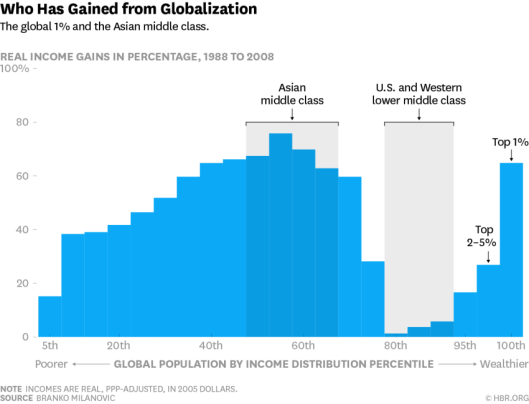Tags
Cambodia, Economics, Indonesia, Isaan, Laos, Malaysia, Philippines, Singapore, Thailand, Vietnam
In seeking to understand the recent political chaos unfolding across Europe and in the United States one explanation keeps recurring; inequality.
I’ve spent a bit of time thinking how to weave that story into a Southeast Asian narrative and the following great graph gives me a way.

Some important points follow, starting with some from me and then some from the author’s text located here.
Firstly, in acknowledging “Asia” is not “Southeast Asia” I would be cautious in drawing definitive conclusions on Southeast Asia, although I would argue the data is still relevant. Secondly, a gentle reminder that the graph shows relative progress, not relative position. Nevertheless, if you want a potentially simplistic answer for why Southeast Asia isn’t gripped by Trump and Brexit fever, the graph may tell you.
Turning to the author’s points and fitting them to a Southeast Asian context, two seem particularly pertinent and potentially troubling.
One is the possibilility that the Southeast Asian middle classes may be, and may increasingly be, doing well at the expense of the middle classes in the rich world, and that’s a future source of tension beyond the region.
Another is that the graph aligns with the emerging view that decreasing global inequality and poverty leads to increasing inequalities at a national level. This is problematic when put alongside the considerable evidence that national inequality is a recipe for political instability, with Southeast Asia offering some of the world’s preeminent examples.
In other words, “solving” poverty in Southeast Asia runs the very real risk of creating much greater political problems within the region.
Sigh. Even the greatest and noblest of causes turn out to be morally troubling.
